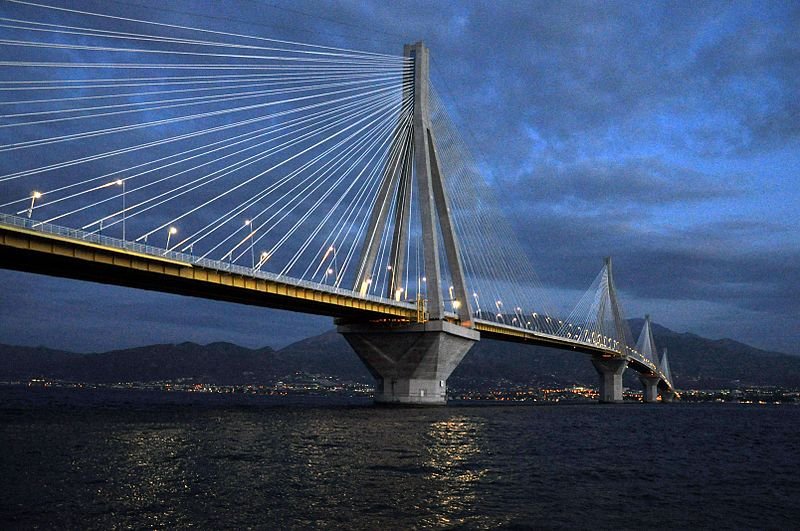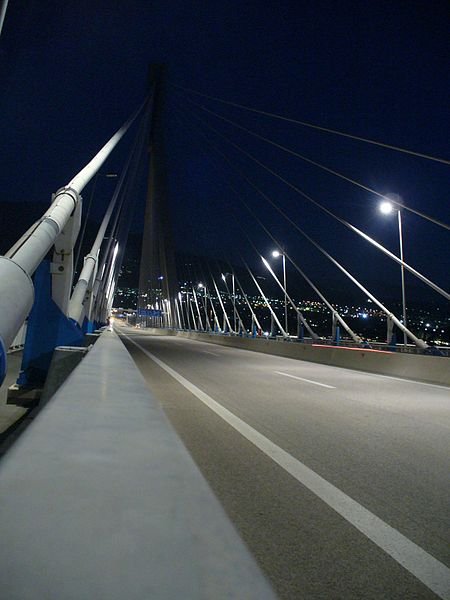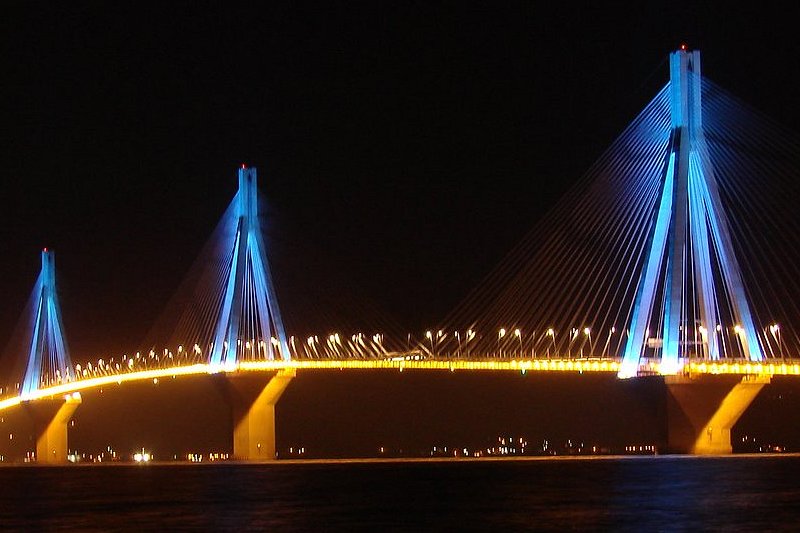 Rio-Antirio Bridge, Greece
Rio-Antirio Bridge, GreeceSource: https://commons.wikimedia.org/wiki/File:BrugPatras.JPG
Author: Ylvo

Rio-Antirio Bridge is the longest multi-span cable-stayed bridge in the world. Completed in 2004, it links the town of Rion, on the outskirts of Patras, on the Peloponnese peninsula to Antirion on mainland Greece. It is also known as the Charilaos Trikoupis Bridge, named after the 19th century Greek prime minister who envisioned it. The bridge has a total length of 2.88 km (9,449 ft) with the longest span being 0.56 km (1,827 ft) in length.
 Rio-Antirio Bridge in the evening
Rio-Antirio Bridge in the eveningSource: https://commons.wikimedia.org/wiki/File:Antirio_bridge_evening.JPG
Author: Dimkoa

The Rio-Antirio Bridge has five four-pylon cable-stayed spans totaling 2.252 km (7,388 ft). This is the world's second-longest cable-stayed deck. Only the 2.46 km (8,071m) deck of the Millau Viaduct is longer. The bridge has two vehicle lanes plus an additional emergency lane on each side. It also has an additional lane for pedestrians and bicycles. The toll for cross the bridge is €12.20 for cars.
 The roadway on the Rio-Antirio Bridge
The roadway on the Rio-Antirio BridgeSource: https://commons.wikimedia.org/wiki/File:Rio-Antirio_bridge_by_night.jpg
Author: Jola Koasidis

Until the Rio-Antirio Bridge was built, the only land access to the Peloponnesus was through the isthmus of Corinth, on the extreme east end. The location of this new bridge makes it possible for vehicles to travel between the Peloponnese and Western Greece.
Engineers building the Rio-Antirio Bridge had formidable challenges to overcome. To accommodate tectonic movements, the piers of the bridge are made to slide on their gravel bed.
 Rio-Antirio Bridge at night
Rio-Antirio Bridge at nightSource: https://commons.wikimedia.org/wiki/File:Rio-Antirio_bridge,_beach_view_(evening).jpg
Author: Dimkoa


Copyright © 2003-2025 Timothy Tye. All Rights Reserved.

 Go Back
Go Back